What is virtual learning? In 2020, the University of Illinois Urbana-Champaign saw a record 59,238 enrollments, combining in-person and online formats a sign that digital education is no longer a side option but a mainstream standard. This growth reflects a broader shift: virtual learning has become a strategic asset not only for academic institutions but also for businesses that need to educate, onboard, or upskill at scale. Whether for a college freshman or a new enterprise sales hire, the ability to learn online on demand, and across devices is now part of the learning experience people expect.
Today, virtual learning is more than convenience, it’s a necessity. Educational systems are adapting to meet the needs of digital-native students, while companies are building training ecosystems that can scale globally without sacrificing impact. For B2B marketers, HR leaders, and training teams, the implications are massive: with the right tools, content, and strategy, virtual learning becomes a driver of growth, retention, and competitive edge. Ignoring it means falling behind not just in technology, but in how people absorb knowledge and stay engaged.
In the wake of the COVID-19 pandemic, virtual learning has seen unprecedented growth. According to a report by Forbes, the global e-learning market is projected to reach $325 billion by 2025, up from $107 billion in 2015. This surge underscores the shift towards digital education platforms as a mainstay in both academic and corporate settings.
In the sections that follow, we explore how virtual learning works, what distinguishes it from traditional formats, and how its features translate into real benefits for both students and teams. You’ll discover how to build engaging online experiences, choose the right platforms, and use webinars to scale education effectively. Whether you’re launching internal training or reshaping your learning strategy for a global audience, this guide lays out what matters and how to make it work.
Virtual learning: definition and core principles
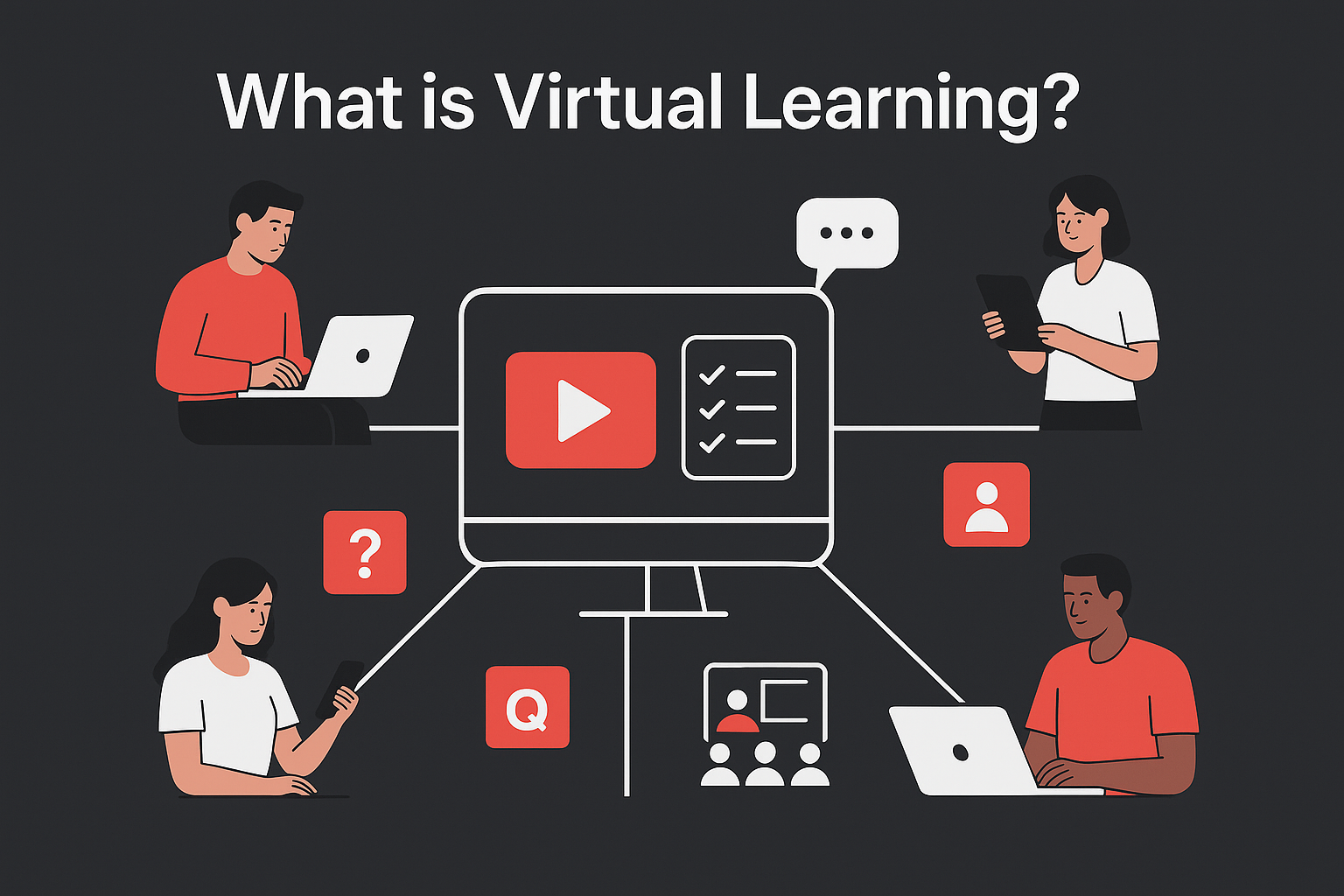
What is virtual learning and how does it work?
Virtual learning refers to the delivery of educational content through digital platforms, enabling learners to access materials remotely. This approach leverages educational technology to facilitate instruction, interaction, and assessment without the constraints of a physical classroom.
How educational technology shapes the modern learning process
The integration of educational technology tools such as Learning Management Systems (LMS), video conferencing, and interactive modules has revolutionized the learning process. These tools provide personalized learning experiences, real-time feedback, and data-driven insights to enhance learner outcomes.
Virtual education vs. digital learning: is there a difference?
While often used interchangeably, virtual education typically encompasses structured programs delivered entirely online, whereas digital learning includes a broader range of technology-enhanced educational experiences, both online and in hybrid settings.
Key benefits of virtual learning for students and institutions
What are the benefits of virtual learning for learners?
Virtual learning offers numerous advantages, including flexibility, accessibility, and cost-effectiveness. Learners can access content at their convenience, accommodating diverse schedules and learning paces.
The role of flexibility and self-paced progress in learning efficiency
The flexibility inherent in virtual learning allows individuals to progress at their own pace, fostering a deeper understanding and retention of material. This self-paced approach caters to various learning styles and needs.
Enhancing student engagement through interactive learning experiences
Interactive elements such as quizzes, discussion forums, and multimedia content enhance student engagement, making the learning experience more dynamic and effective.
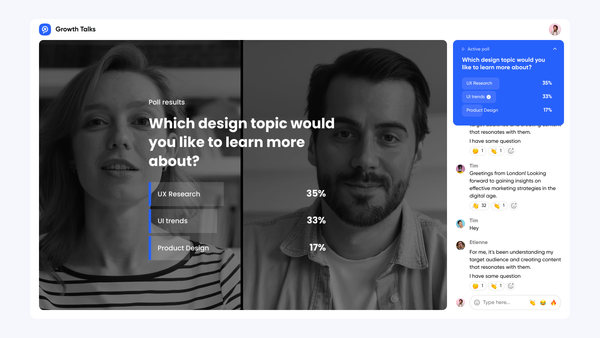
How companies use virtual learning to train, onboard, and scale
Streamlining employee onboarding with virtual training sessions
Organizations utilize virtual training platforms to deliver consistent and efficient onboarding experiences, ensuring new employees are well-equipped from the start.
Delivering consistent product training across teams and regions
Virtual learning enables companies to provide uniform product training, ensuring all team members, regardless of location, have access to the same high-quality information.
Running effective internal communications and executive announcements
Through webinars and virtual meetings, businesses can conduct impactful internal communications, keeping employees informed and aligned with organizational goals.
Building a culture of continuous learning and development
By integrating virtual learning into their operations, companies foster a culture of continuous learning, promoting ongoing professional development and adaptability.
Virtual learning vs traditional classroom: understanding the difference
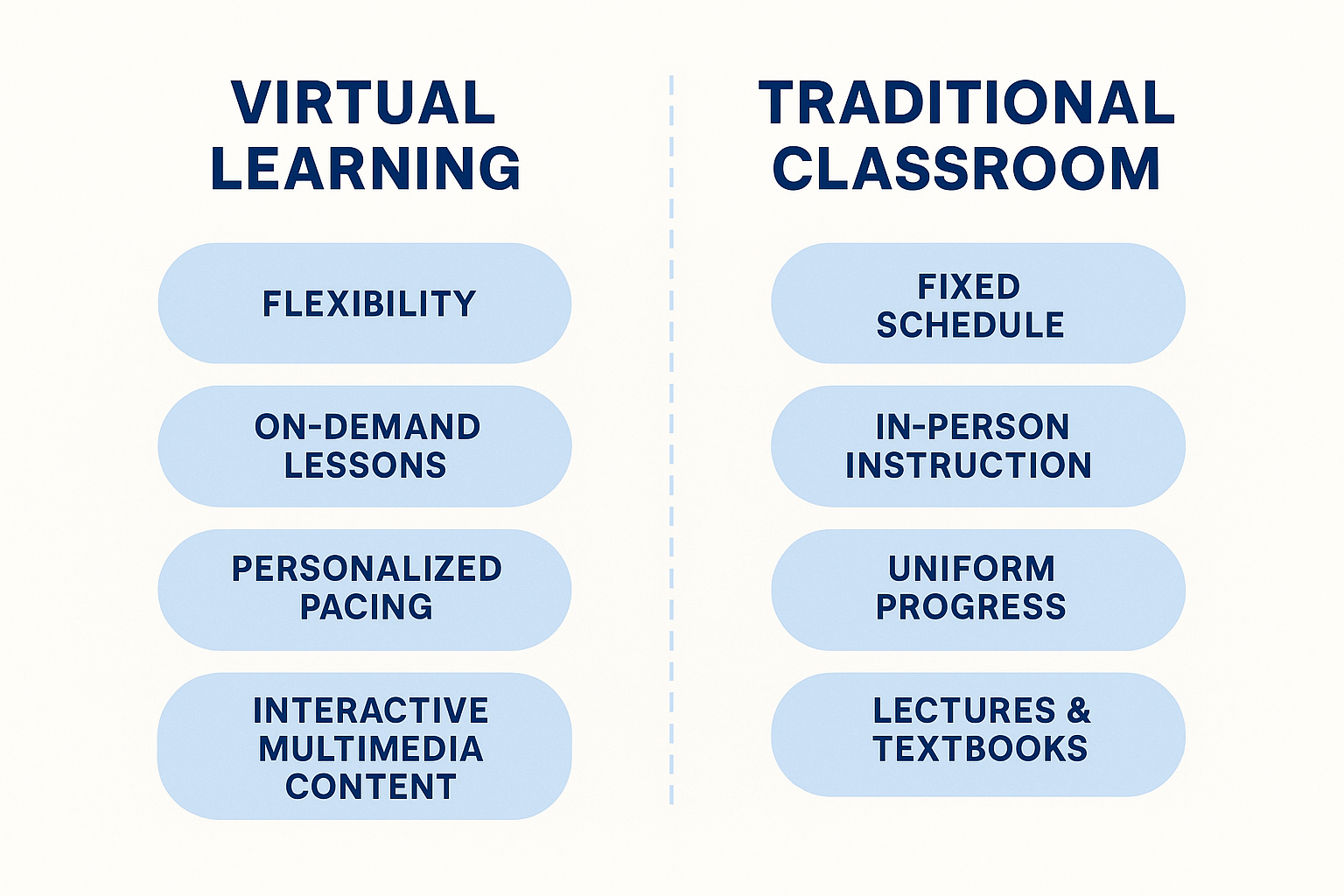
How does virtual learning differ from traditional learning?
Unlike the traditional classroom, virtual learning offers flexibility, scalability, and accessibility, breaking down geographical and temporal barriers to education.
From physical classrooms to hybrid models: a new standard?
The rise of hybrid learning models combines the benefits of in-person and virtual instruction, providing a balanced and adaptable educational approach.
Distance learning vs. synchronous instruction: what’s right for you?
Choosing between distance learning and synchronous instruction depends on individual needs, with each offering distinct advantages in terms of flexibility and real-time interaction.

Create interactive webinars on Contrast
Start for free with up to 30 registrants. No credit card needed.
Start for freeInside a virtual learning environment (VLE)
What is a virtual learning environment and why it matters
A Virtual Learning Environment (VLE) is a digital platform that facilitates the management and delivery of educational content, assessments, and communication between instructors and learners.
The LMS: backbone of digital learning
The Learning Management System (LMS) serves as the core of digital learning, providing tools for content creation, progress tracking, and learner engagement.
Delivering educational content through a VLE
VLEs enable the seamless delivery of educational content, incorporating various multimedia elements to enhance the learning experience.
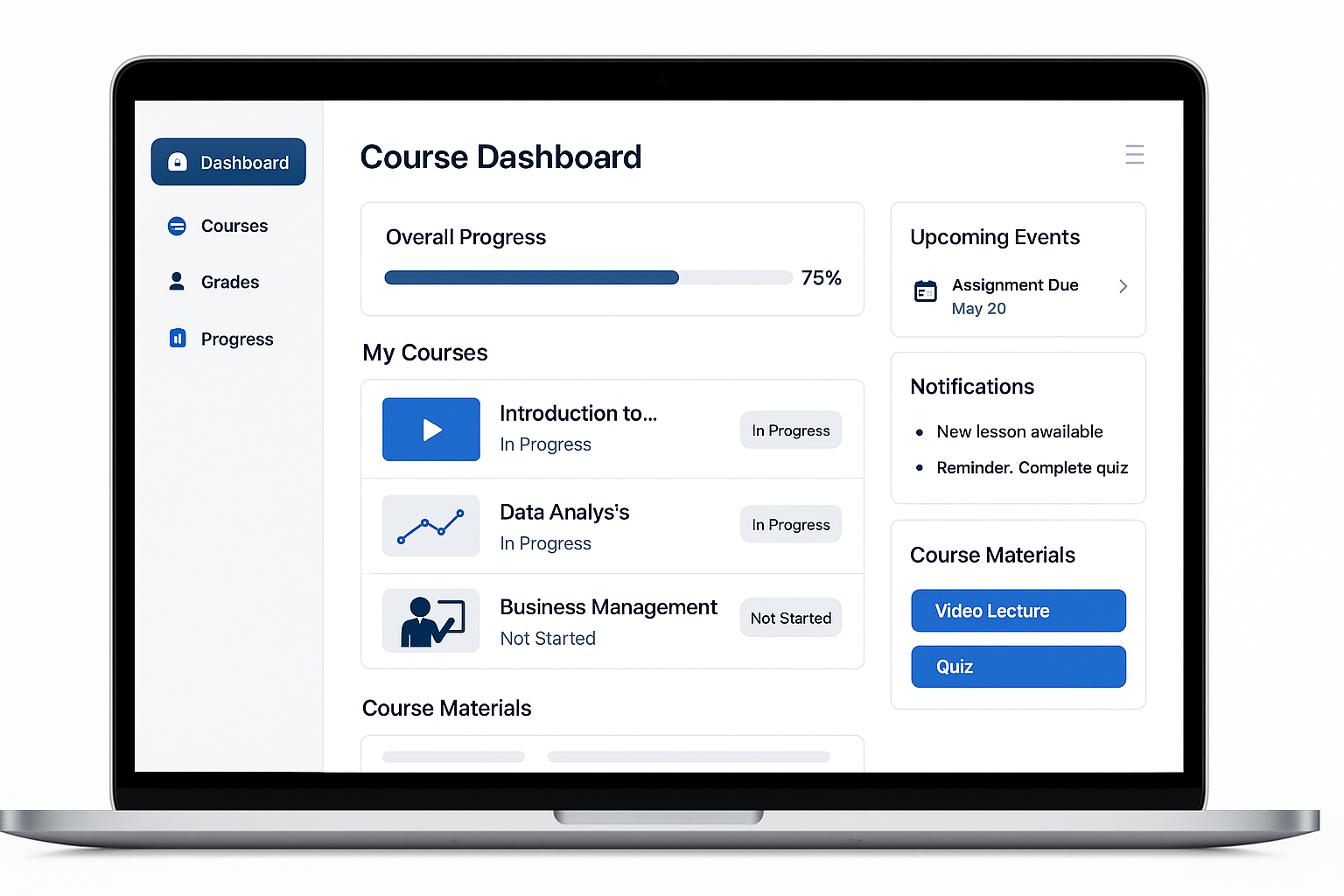
The different types of virtual learning explained
Synchronous vs. asynchronous virtual learning: pros and cons
Synchronous learning involves real-time interaction, fostering immediate feedback and collaboration, while asynchronous learning offers flexibility, allowing learners to access materials at their convenience.
Overview of common virtual course formats and programs
Virtual learning encompasses various formats, including virtual courses, webinars, and online workshops, each designed to meet specific educational objectives.
Remote learning for corporate vs academic settings
In corporate settings, remote learning focuses on skill development and compliance, whereas academic environments emphasize curriculum-based instruction and accreditation.
How to engage students in virtual learning environments
Building an interactive virtual classroom
Creating an interactive virtual classroom involves incorporating tools that promote participation, such as live polls, breakout rooms, and collaborative projects.
Creating a learning community through live and async tools
Fostering a learning community requires leveraging both live sessions and asynchronous forums to encourage communication and peer support.
Designing course content that promotes participation
Effective course content design includes clear objectives, engaging materials, and opportunities for learners to apply knowledge, enhancing overall student engagement.
Addressing the challenges of virtual learning
What are the biggest challenges in virtual learning today?
Common challenges in virtual learning include maintaining motivation, managing time effectively, and minimizing distractions in non-traditional learning environments.
Helping students stay motivated and focused online
To combat motivation issues, incorporating gamified elements and setting achievable goals can keep learners engaged and on track.

Time management in a distraction-prone environment
Developing strong time management skills is crucial in virtual settings, where learners must balance responsibilities and minimize potential distractions.
Why webinars are the backbone of effective virtual learning
A scalable format for modern digital classrooms
Webinars offer a scalable solution for delivering content to large audiences, making them ideal for both educational institutions and corporate training programs.
Interactive features that boost engagement and retention
Incorporating interactive features such as Q&A sessions, polls, and chat functions in webinars enhances engagement and aids in knowledge retention.

Webinars for both synchronous and asynchronous instruction
Webinars can be utilized for synchronous instruction, providing real-time interaction, or recorded for asynchronous access, offering flexibility to learners.
Recording, replay, and content reuse for long-term learning value
The ability to record and replay webinars allows for content reuse, extending the value of the material and supporting continuous learning efforts.
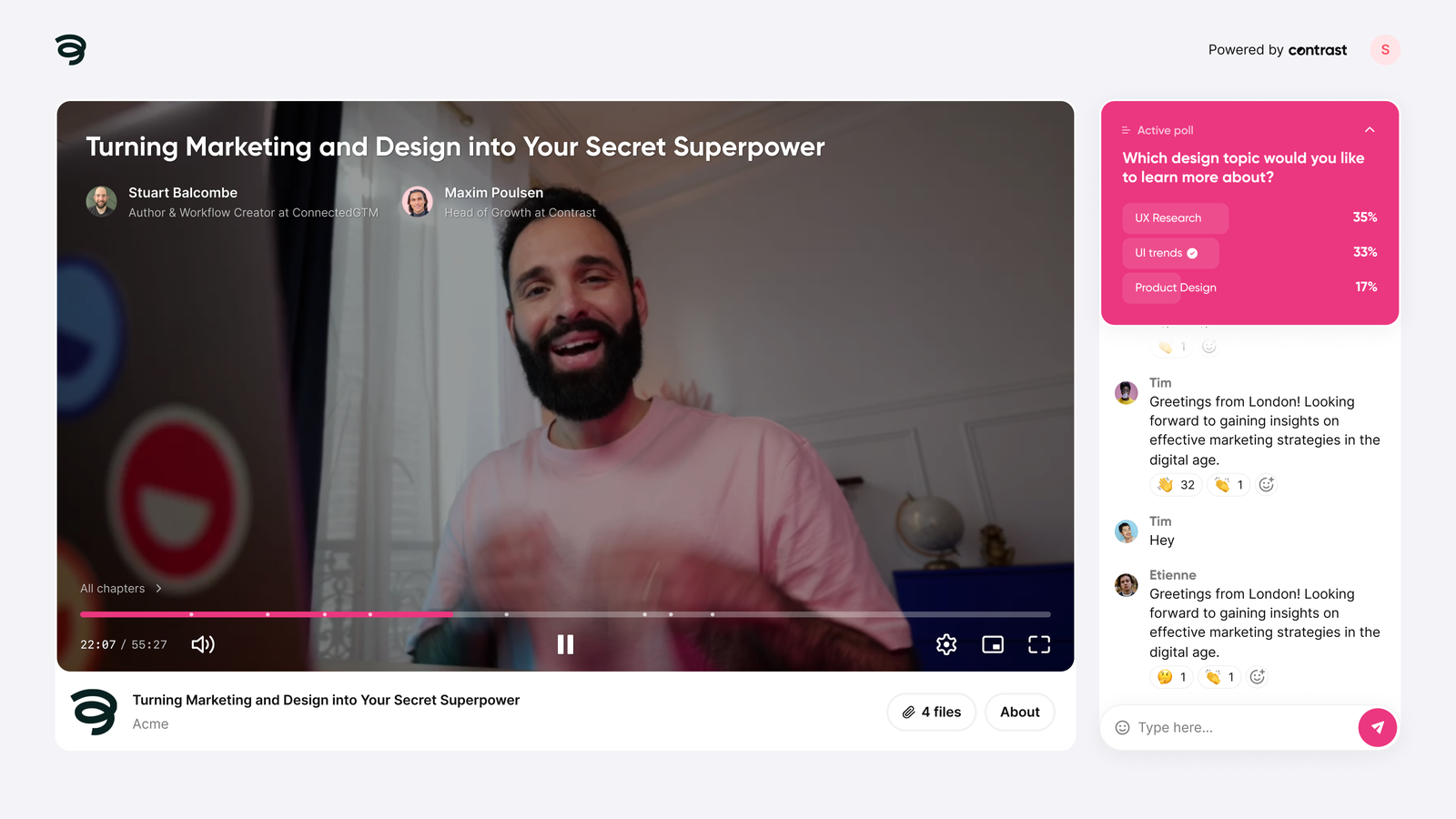
Final thoughts: making virtual learning a strategic advantage
Virtual learning is no longer just an alternative it's a core part of how people learn, train, and grow. Whether you're in higher education, running a virtual school, or managing a corporate learning program, your ability to deliver engaging, accessible, and effective instruction online directly impacts performance and satisfaction.
When paired with the right learning management systems, course design, and interactive technologies, virtual learning becomes more than just content delivery. It becomes a system of engagement, feedback, and growth. That’s why the best learning platforms don’t just host content they create spaces for connection, reflection, and real progress.
If your organization wants to scale learning while maintaining quality, webinars and virtual classrooms offer an unmatched opportunity. And with platforms like Contrast, combining live sessions, on-demand content, and detailed analytics, you can turn every training session or class into a powerful learning moment.
The future of education and training is already here and it’s virtual, blended, and built for real outcomes.


Create Engaging Webinars on Contrast
Start for free up to 30 registrants. No credit card needed.
Start for free